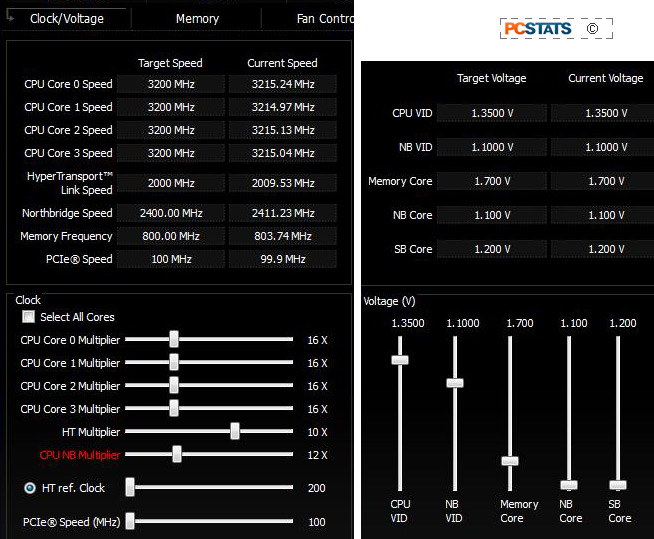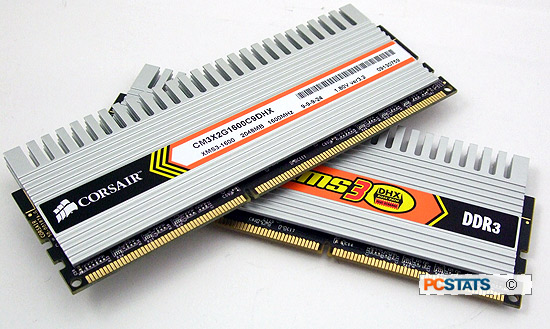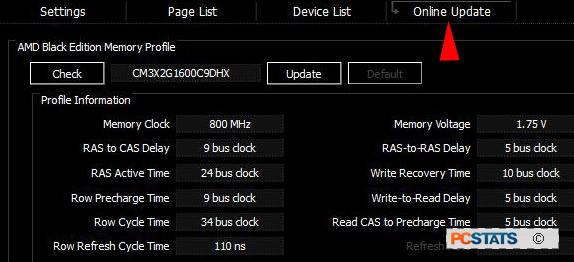
|
AMD's suggested retail price for the Phenom II X2 550 processor is a mere $103 USD ($110 CDN, £62 GBP), which positions it right between Intel's 2.6GHz E5300 processor and the Core 2 Duo 2.8GHz E7400 processor. This makes it both an inexpensive, easy upgrade for those looking to drop it into an existing socket AM2+ motherboard. The 3.1GHz clockspeed and potential overclocking headroom....
|
|
|
|
Home >
Reviews >
CPU / Processors >
AMD Phenom II X2 550 Black Edition |
|
|
AMD Overdrive 3.0 - Black Edition Memory Profiles
AMD Overdrive
AMD's
gift to these brave performance daredevils is Overdrive 3.0, an updated version
of its existing performance tuning and software overclocking suite that is
designed to give unprecedented levels of control over system clocks and
settings. When compared to similar solutions from Intel and NVIDIA, AMD
Overdrive 3.0 has far more comprehensive controls, adjustments and options. It's
a tool with enough depth that even advanced overclockers will want to use it,
negating the need to trek through the BIOS and continually restart the system.
|

The performance control panel in AMD Overdrive
3.0. Fingertip overclocking of AMD processors, system memory and ATI
videocards from one control panel.
|
Simple
controls that automate most of the overclocking process are available to novice
users; a basic slider will adjust performance from within the GUI. Using the
slider, it was possible to increase the stock 16x multiplier of the Phenom II X4
550 Black Edition processor up to 16.5x, which essentially overclocked the
processor from 3.1GHz up to 3.3GHz.
While this feature is made deliberately simplistic, it
does provide a lot of feedback and information on which settings are being
changed in order to improve performance. It's a good way to learn more about how
your CPU and chipset function and what exactly goes on inside your system.
For advanced overclockers there are a lot more options
to play with. AMD's Overdrive software can monitor voltages, CPU clock speeds,
CPU multipliers, front side bus speeds, memory frequencies, PCI Express
frequencies and even the core speed of the IGP and Sideport memory. There's also
a separate page dedicated to memory that lists pretty much every timing option
available. It would be nice to see some more built-in recommendations and ToolTips
of what each RAM setting does, but as it stands the included
help file at least gives a description of each variable.
A built in benchmarking utility tests Integer Computation, Floating Point Computation, Memory Speed and
Cache Speed, and then returns individual scores as well as a synthesized result
from all four tests combined. It's not quite as exhaustive as what's
possible with PCMark Vantage or SiSoft Sandra, but it provides a good indication of how
much faster your system has become after overclocking.
The stability test stresses the CPU to see if there are
any potential problems caused by overclocking too far. It's possible to test
Floating Point Unit and Integer calculation separately for individual cores, as
well as doing overall calculation tests and checking system registers. Once the
system is being stress-tested, voltage draw and temperatures can be monitored
using the status monitor window, which can read temperatures, processor
utilization, as well as voltages for the separate cores of the processor.
BEMP
Black
Edition Memory Profiles are a new feature to AMD Overdrive. It's AMD's way of
getting the most out of high-performance DDR3 memory paired with, you guessed
it, a Black Edition processor. Working in partnership with popular memory
manufacturers, AMD has created an online database
with presets for the fastest memory timings for high frequency memory modules.
 BEMP works through
AMD's Overdrive software. Supported AM3 motherboards can detect compatible
memory and connect to the internet to download an XML profile with the
appropriate memory timings - this means profiles can be rapidly updated, revised
and included. BEMP works through
AMD's Overdrive software. Supported AM3 motherboards can detect compatible
memory and connect to the internet to download an XML profile with the
appropriate memory timings - this means profiles can be rapidly updated, revised
and included.
The
entire system is similar to Intel's XMP, but could potentially be more versatile
since it does not rely on the embedded SPD profile of the installed memory.
AMD's
BEMP removes a lot of the guesswork of selecting balanced memory speeds and
timings, resulting in a one-click solution that simply boosts performance.
The
system was booted into Windows Vista, AMD Overdrive loaded up and the BEMP
profile loaded. The PC restarted to lock in the new memory settings, and was
then run through WinRar, Cinebench and PCMark Vantage's memory tests. BEMP was
used to optimize memory settings, and we also compared similar memory speeds as
configured in the BIOS by memory SPD settings, and with latencies manually
configured to find out if PCSTATS could exceed the BEMP scores.
|

The BEMP setting,
as downloaded from AMD for Corsair DDR3-1600 CAS9
memory.
|
Pre-set
'performance' settings are often very conservative, or not performance-tuned
enough. It was important for us to find out if AMD's BEMP is A) actually useful
and B) a time saver that offers up a better end result.
| Memory Timings
Performance Test vs. AMD BEMP Settings |
|
AMD B.E.M.P. |
BIOS / SPD |
BIOS / SPD |
BIOS (Tuned) |
Memory Speed
& CAS
Latencies: |
DDR3-1600
9-9-9-24-34-1T |
DDR3-1600
11-11-11-30-41-1T |
DDR3-1333
9-9-9-25-34-2T |
DDR3-1333
7-7-7-20-27-1T |
| 3DMark06: |
15181 |
15078 |
15058 |
15081 |
| CineBench: |
10552 |
10530 |
10412 |
10535 |
|
Sandra 2009
Memory Bandwidth Int: (GB/s) |
15.63 |
13.45 |
13.00 |
13.14 |
Sandra 2009
Memory Bandwidth Float: (GB/s) |
15.60 |
13.46 |
12.96 |
13.2 |
Sandra 2009
Memory Latency (Random): (ns) |
72 |
81 |
83 |
76 |
Sandra 2009
Memory Latency (Linear): (ns) |
12 |
14 |
14 |
14 | |
Fighting
with the BIOS over memory timings is not fun... while it's possible to manually
tune CAS values up to the levels that BEMP selects, it took a while for us to
get the PC stable and to the point where performance exceeded the built-in
memory profiles. While overall neither approach resulted in huge gains, it is
free performance that's easy to unlock.
BEMP makes
it easy to get memory working at its rated speeds, and does a better job than
relying on the motherboard to auto-detect SPD settings which are indeed
conservative and don't push things very far.
Contents of Article: AMD Phenom II X2 550 Black Edition
|
|
Pg 1.
AMD Phenom II X2 550 Black Edition 3.1 GHz Socket AM3 Processor Review
Pg 2.
— AMD Overdrive 3.0 - Black Edition Memory Profiles
Pg 3.
Overclocking, Power Draw and Test Specs
Pg 4.
CPU System Benchmarks: SYSMark 2007, PCMark Vantage
Pg 5.
CPU Synthetic Benchmarks: SiSoft Sandra Processor/Memory
Pg 6.
CPU Calculation Benchmarks: Super Pi, wPrime2.0, ScienceMark2, WinRAR
Pg 7.
CPU Rendering Benchmarks: Cinebench R10, Bibble 5
Pg 8.
CPU Rendering Benchmarks: POV-Ray, 3.7, SPECviewPerf 10
Pg 9.
CPU Synthetic Gaming Benchmarks: 3DMark Vantage, 3DMark 06
Pg 10.
CPU Gaming Benchmarks: Crysis, FEAR
Pg 11.
Best Dual-Core Chip for $110?
|
|
|
